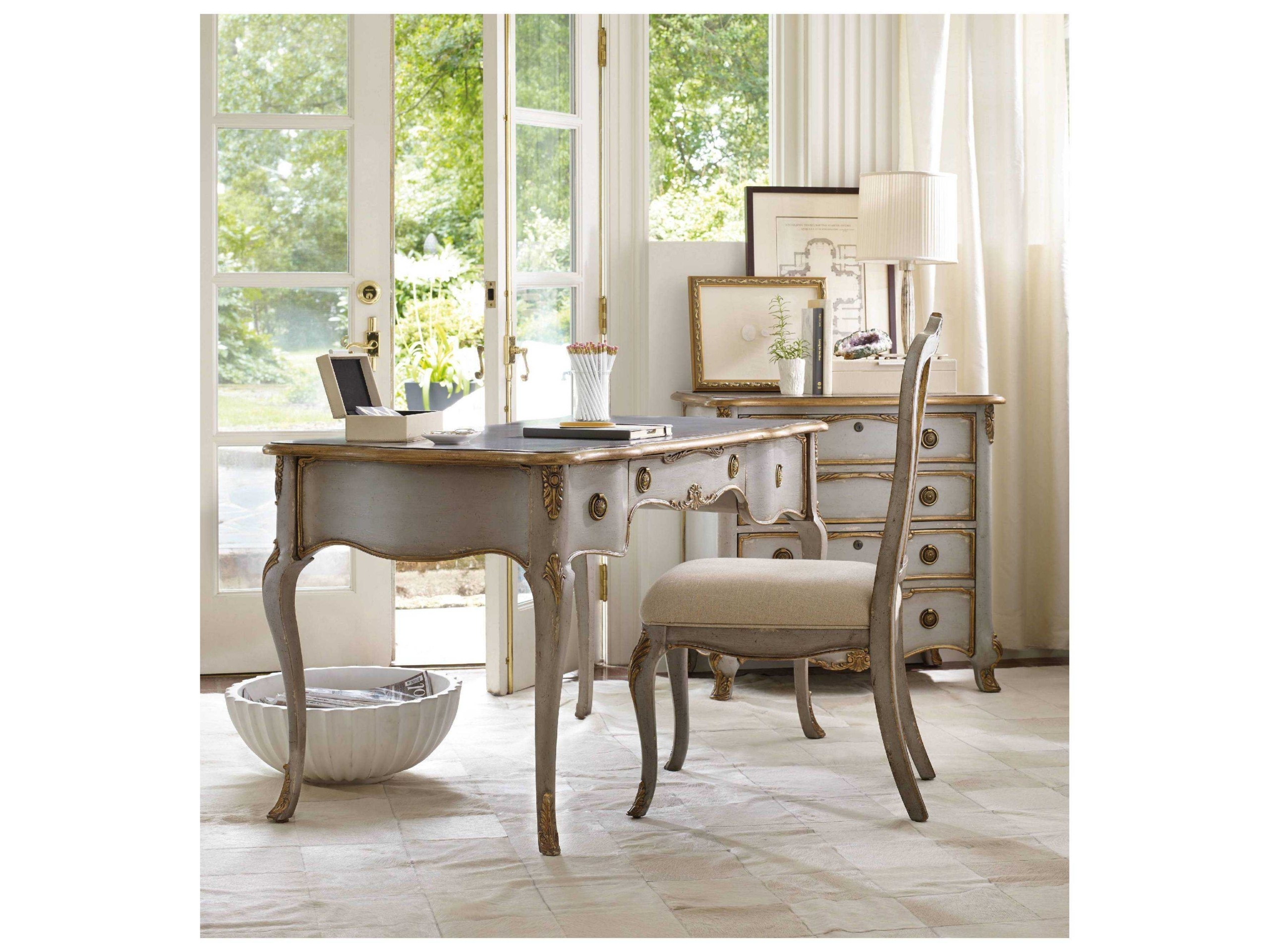Design & Aesthetics of French Country Desk Chairs

French country desk chairs evoke a sense of rustic charm and timeless elegance, seamlessly blending practicality with aesthetic appeal. Their enduring popularity stems from their ability to infuse any space with a touch of relaxed sophistication, whether it’s a home office or a more formal study. These chairs offer a captivating blend of traditional craftsmanship and comfortable design, making them cherished pieces in many homes.
Typical Design Elements of French Country Desk Chairs
French country desk chairs are characterized by a distinct set of design elements that contribute to their unique charm. The materials used, construction techniques, and decorative features all play a crucial role in defining their aesthetic.
| Material | Construction | Decorative Features | Example Image Description |
|---|---|---|---|
| Solid oak, beech, or chestnut wood; often with a naturally distressed finish. | Traditional joinery techniques, often showcasing exposed mortise and tenon joints. | Simple, elegant carvings; possibly featuring floral motifs or acanthus leaves. | Imagine a chair with subtly curved legs made of light oak, showing the natural grain. The seat is upholstered in a simple linen fabric, and a small carved rose is visible on the chair’s back splat. |
| Painted wood, often in muted tones like creamy white, pale blue, or soft green. | Sturdy construction, designed for durability and long-term use. | Distressing techniques create a sense of age and character, often with subtle chipping or wear. | Picture a chair painted a soft, Provençal blue. The paint shows signs of gentle wear, revealing hints of the underlying wood. The chair back features a simple, slightly distressed stencil design. |
| Upholstery fabrics such as linen, cotton, or toile de Jouy. | Use of traditional weaving techniques in the upholstery. | Nailhead trim; often in brass or dark metal, adding a touch of sophistication. | Visualize a chair with a seat and back upholstered in a classic toile de Jouy fabric. The fabric features a repeating pattern of pastoral scenes. Brass nailhead trim neatly Artikels the upholstery. |
| Wicker or cane, often used for the seat or back. | Hand-woven construction, demonstrating skilled craftsmanship. | Simple, elegant lines; emphasizing natural materials and textures. | Envision a chair with a woven cane seat and a simple, curved wooden frame. The natural color and texture of the cane are highlighted, creating a rustic yet refined aesthetic. |
Stylistic Differences Between Regional Interpretations, French country desk chair
Regional variations within France contribute to the diverse stylistic expressions found in French country desk chairs. These differences reflect the unique cultural and artistic traditions of each region.
French country desk chair – The following bullet points highlight key distinctions:
- Provence: Often features lighter woods, pastel paint colors, and floral motifs. A sense of sun-drenched warmth and simple elegance is characteristic.
- Normandy: Tends to utilize darker woods, such as oak or chestnut, and often incorporates more rustic and substantial construction. The style is more robust and grounded.
- Loire Valley: Might showcase more ornate carvings and detailing, reflecting the region’s rich history and aristocratic influences. A greater sense of formality is apparent.
Evolution of French Country Desk Chair Design
The design of French country desk chairs has evolved over centuries, reflecting shifting styles and societal influences. Key periods and styles have shaped the aesthetic we recognize today.
A chronological overview of significant periods:
- 17th and 18th Centuries: The Louis XIV, Louis XV, and Louis XVI styles influenced early forms, incorporating ornate carvings, gilded details, and luxurious fabrics. These chairs were often highly formal and opulent.
- 19th Century: The rise of Romanticism and the Industrial Revolution led to a shift towards simpler designs, incorporating more rustic elements and focusing on comfort and functionality. The emphasis on natural materials increased.
- 20th and 21st Centuries: Modern interpretations of French country style emphasize a blend of rustic charm and contemporary elegance. A variety of materials and finishes are used, reflecting a more eclectic approach.
